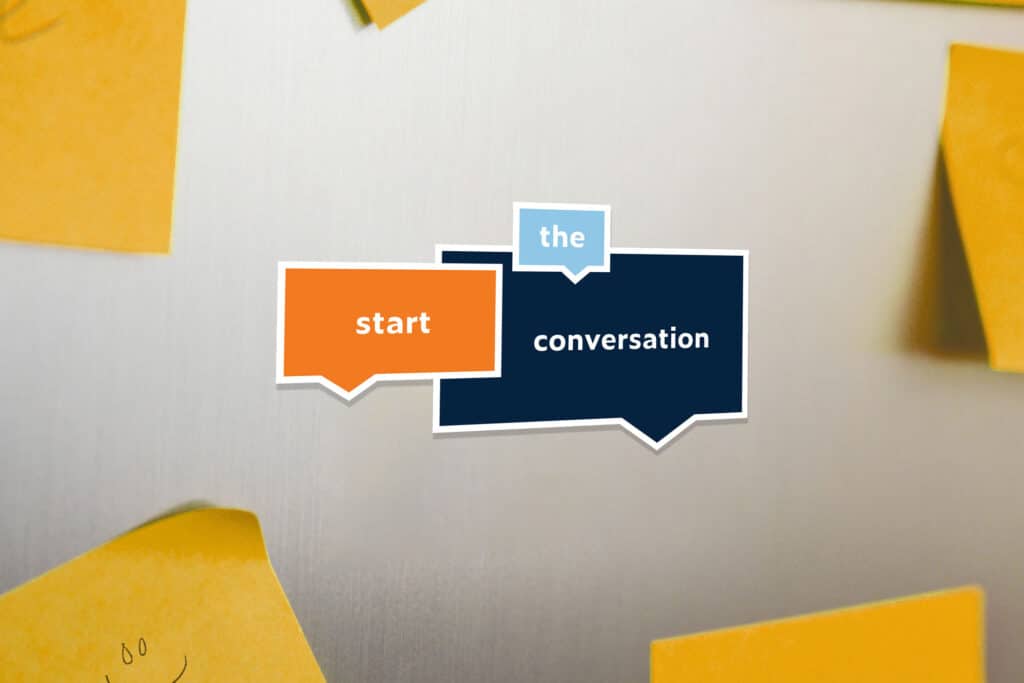Emma Case (00:00):
Welcome to Inside The Senior Alliance, a podcast exploring resources and issues in the field of aging. I’m Emma Case, Planning and Advocacy Specialist at The Senior Alliance, the Area Agency on Aging, serving Western and Southern Wayne County. Joining me today is Toni Gingerelli, Director of Policy and Advocacy from the National Alliance for Caregiving. Toni, thank you for joining me today.
Toni Gingerelli (00:19):
Thanks so much for having me, Emma.
Emma Case (00:20):
Toni, can you give a brief overview to our listeners of what the National Alliance for Caregiving or NAC is?
Toni Gingerelli (00:26):
Sure. So the National Alliance for Caregiving is located in Washington DC and our mission is to build partnerships in research, advocacy and innovation to make life better for family caregivers. And we envision a society that values, supports and empowers family caregivers to thrive at home, work and life.
Emma Case (00:44):
Your work centers around family caregivers, can you explain who a caregiver is for those who may not know?
Toni Gingerelli (00:50):
So, a family caregiver is a person providing informal care and support to an aging family member or people of any age with a disability or a health condition. In the United States, there’s nearly 53 million unpaid family caregivers at this point in time. This is based on caregiving in the US which is one of our flagship reports. And, you know, the chances of someone becoming a caregiver is very high. There’s a quote that I really love by Rosalyn Carter. “So there are only four kinds of people in the world, those who have been caregivers, those who are currently caregivers, those who will be caregivers, and those who will need a caregiver”. And at some point in each of our lives, we are going to either receive care or be a caregiver. And when it comes to the term family caregiver, sometimes people don’t realize they are in fact caregivers. You know, maybe you are regularly managing a person’s finances or arranging for outside services for someone with a chronic condition or visiting an older adult routinely to see how they’re doing. That is caregiving.
Emma Case (01:50):
In 2020 NAC and AARP reported on trending research of caregivers across the United States. This research is part of an ongoing study that occurs every five years. Your research touches on various economic, social and cultural needs or concerns of family caregivers across lifespans and conditions. How do you conduct this study and what did you find in your most recent study?
Toni Gingerelli (02:11):
We’re very proud of our caregiving in the US report. It’s in partnership, as you said, with AARP and the report is based on a nationally representative quantitative study of online surveys. And our last report was published in 2020 and we’re gearing up for our 2025 report, which we’re really excited about. As I mentioned before, a report found that there are nearly 53 million unpaid family caregivers across the country and the number of Americans providing unpaid care has increased over the last five years. And we project that it’s going to continue to increase as the population continues to age and as people continue to live longer. So in terms of some of the demographics, we know that there’s a prominent amount of caregivers that are caring for more than one person. Nearly 24% of caregivers are caring for more than one person. And that we’ve seen an increase since a report that was done five years prior.
Toni Gingerelli (03:05):
In terms of some more demographics, we know that 61% of women are caregivers and 39% of men are caregivers in terms of the breakdown. So the responsibility is still falling on women as we can see from the numbers, but that is changing. More and more people are caregivers that identify as men. In addition, six in ten caregivers report being non-Hispanic white, which is around 61%, 17% identify as Hispanic or Latino. 14% identify as non-Hispanic, African-American or black, and then 5% as Asian American and Pacific Islander and 3% also as another race or ethnicity. By showcasing that data, I wanted to showcase that caregivers come from all different backgrounds and it’s really important that as we think about caregiving and supporting caregivers, we’re thinking of it from a lens of diversity and equity and just some more data that I thought was really important to highlight and that listeners might be interested in thinking about is that the generational demographics of caregivers is, you know, right now boomers are the highest number of caregivers, but it’s followed by Gen X and there’s a rising number of Gen Z millennial caregivers. And we also can’t forget about youth caregivers. There’s nearly 5.4 million across the United States and they’re often an unrecognized population. And it’s really important that we’re thinking about how we can inform policies that impact these caregivers.
Emma Case (04:26):
In 2020 NAC and AARP reported on the trending research for caregivers across the US. This research is a part of an ongoing study that occurs every five years. Your research touches on various economic, social and cultural needs or concerns of family caregivers across lifespans and conditions. How do you conduct this study and what did you find in your most recent study?
Toni Gingerelli (04:47):
As you said before, the National Alliance for Caregiving Partners with AARP to release our flagship report called Caregiving in the US and the report is based on a nationally representative quantitative study of online surveys. And our last report was published in 2020, but we’re gearing up and excited for our 2025 report. Our report found in 2020 that there are nearly 53 million unpaid family caregivers across the country. And we know that the number of Americans providing unpaid care has increased over the last five years and will continue to increase. In terms of some of the demographics for gender, we know that 61% of caregivers identify as women and 39% as men. So as you can see, there is still some societal norms about who is doing caregiving, but that is slowly changing. In addition, we know that 24% of caregivers are caring for more than one person, and that’s up from our last report, which found that 18% of caregivers are caring for more than one person.
Toni Gingerelli (05:44):
And I’d also like to emphasize that caregivers are diverse. They come from all different backgrounds in terms of race, ethnicity, socioeconomic status. So it’s really important when we’re doing our advocacy and when we are talking about family caregivers, we’re making sure that diversity and inclusivity and meeting people where they’re at is centered in all of the work that we do. In terms of some of the generational demographics, the majority of family caregivers right now are from the Boomer generation followed by Gen X, but there’s a rising number of Gen Z and millennial caregivers. And we also can’t forget youth caregivers. So those under the age of 18 who are often forgotten but essential to caregiving in the United States and there are nearly 5 million of them. So as we think again about policy, we want to make sure that it is also benefiting those who are under the age of 18.
Toni Gingerelli (06:33):
And when it comes to demographics about caregivers who also work, we know that 61% of caregivers also work in addition to their caregiving responsibilities. And as a whole, out of all of the caregivers that we surveyed, 45% of them reported having at least one financial impact. So economic empowerment and economic security is so important in the work that we do. And lastly, when it comes to mental health for caregivers four in ten family caregivers have reported experiencing high emotional strain. And we also know that from our mental health and caregiving report, that almost three quarters, 74% of caregivers have reported feeling alone at some point. And we also know that women report experiencing higher stress compared to men. So it’s really important that when we talk about caregivers health, that mental health is a key component of this.
Emma Case (07:24):
Other than Act on Race, are there any other bills or legislation that you are tracking that our listeners might be able to get involved with as well?
Toni Gingerelli (07:31):
Yeah, so there are a few pieces of legislation on the federal level that have been introduced that we’ve been tracking. All three of these are bipartisan. So the first is the Connecting Caregivers to Medicare Act, which is a bill recently introduced to help educate and inform Medicare caregivers about their options and enable them to reach out to 1-800-MEDICARE to share health information. The second piece of legislation that we’re also tracking is called the Lowering Cost for Caregivers Act, which will enable family caregivers to use their health savings accounts and flexible spending accounts and medical expenses for their parents. And then the last piece of legislation that we are tracking is the Credit for Caring Act, which is a, again, bipartisan family caregiver tax bill that has been in development since 2016 and it provides a non-refundable tax credit of up to $5,000 to offset caregiver expenses.
Toni Gingerelli (08:27):
And with that piece of legislation, I also, you know, obviously that’s happening on the federal level, but there have been a lot of proposals at the state level for something similar, a tax credit, like this piece of legislation. I know in Michigan, governor Whitmer proposed the tax credit in her budget. That’s something to look out for as well. And then we have a few other pieces of legislation coming down the pipeline, especially as we’re approaching the reauthorization of the Older American Act, which for those who don’t know, is a federal law that provides grants to states for community-based services and programs for older adults.
Emma Case (09:01):
If a listener wants to know more about the National Caregiving Alliance or get involved or look at any of these bills or look into your research, where can they go?
Toni Gingerelli (09:11):
Yeah, so you can visit the National Alliance for Caregiving website. So you can go to caregiving.org and again, that’s caregiving.org. And you can find our caregiving in the US report, as well as a variety of other reports that our programs team puts out, including our report on transplant caregivers as well as mental health for caregivers. And to get involved with the campaign, you can go to our microsite, which again is actonraise.org.
Emma Case (09:36):
Toni, thanks so much for joining me on this episode. If you have any questions about our services or programs that The Senior Alliance offers, you can call us at (734) 722-2830 or email us at info@thesenioralliance.org. Information about our agency or the programs and services we offer can be found on our website at www.thesenioralliance.org. On Facebook, we can be located by searching The Senior Alliance. Finally, our X, formerly known as Twitter handle, is @AAA1C. I’m Emma Case. Thank you for listening to this episode of Inside The Senior Alliance.
Speaker 3 (10:13):
Inside The Senior Alliance is a production of the Senior Alliance and Blazing Kiss Media.





